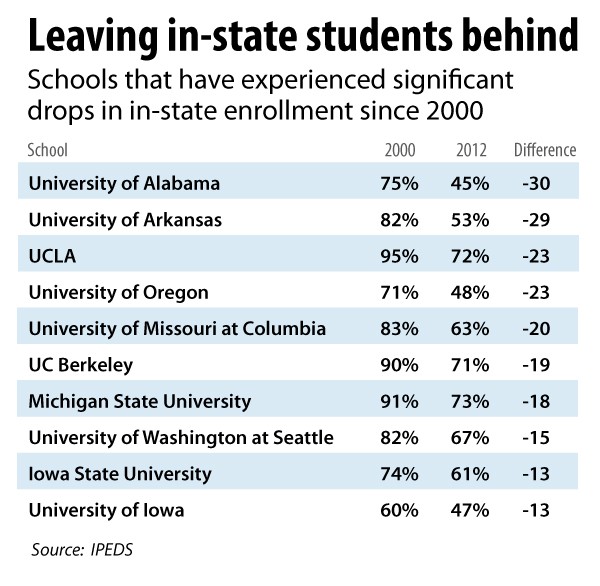Many public colleges are leaving in-state students behind
As budget cuts have hit public colleges hard, many have raised tuition to make up the difference.
But others, including the University of Alabama, University of Arkansas and UCLA, have employed a different strategy: enrolling more out-of-state students, who pay higher tuition than in-state students.
Out-of-state enrollment on the rise at public colleges
A recent Hechinger Report investigation of 400 public colleges using U.S. Department of Education data found that about 60 percent saw the percentage of their in-state freshmen population decline from 2000-2012.
And those declines weren’t minor drops: nearly one-fifth of the institutions had decreases of 10 percentage points or more, with 11 colleges declining by at least 20 percentage points.

Public universities are increasingly enrolling affluent out-of-state students who can afford to pay higher tuition rates, rather than in-state students who pay lower rates.
Public colleges increasingly for the privileged
Why does it matter?
A recent study found that when a public research university enrolls more out-of-state students, it has fewer seats left for low-income and minority students. Put simply,
By bringing in more and more wealthy nonresident students to make up for state budget cuts, these public universities are increasingly becoming bastions of privilege.
Public colleges are meant to provide a lower-cost alternative to private and out-of-state colleges for in-state residents who pay taxes to support the universities.
But by increasingly favoring out-of-state students, public colleges are hurting the low-income students who need an affordable college option the most.
Fixing the privilege problem at public colleges
Experts say capping the enrollment of nonresident students at public universities is one way to prevent public colleges from enrolling out-of-state students over in-state students.
In addition, many believe states should agree to boost spending on these institutions, so that they’re not incentivized to choose out-of-state students over residents.
We think that these are both smart ideas that would help secure public colleges as an affordable alternative to higher-cost private and out-of-state schools.
Public colleges remain an affordable option
Many public colleges, particularly those in the SUNY system located in our home state of New York, provide a way for both in-state and out-of-state students to get a quality education at an affordable price.
But in some cases, a private college can be an even more affordable option after financial aid.
That’s why it’s important to apply to a mix of colleges and not limit yourself based on sticker price.
If you need help making college affordable or figuring out how to pay for it, we can help. Give us a call at 1-888-234-3907 or contact us using this form.
affording college, choosing a college, in state students, public colleges
